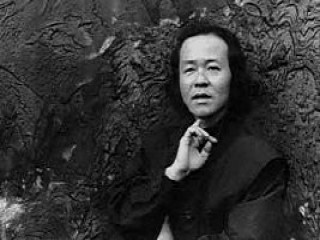
Somei Satoh biography
Date of birth : 1947-01-19
Date of death : -
Birthplace : Sendai,Japan
Nationality : Japanese
Category : Arts and Entertainment
Last modified : 2012-01-25
Credited as : Composer, gendai hogaku music, Burning Meditation
0 votes so far
Because Satoh is such an original artist, even experts in Japanese studies have found it difficult to assign him a specific place on the spectrum of Japanese musical tradition. While some scholars have placed him in the context of hogaku (traditional Japanese music), others have described him as a gendai hogaku (contemporary traditional). Satoh's music is profoundly Japanese, but in a way that seems intangible and undefinable.
Born in 1947, Somei Satoh was largely self-taught, and his musical career was profoundly influenced by the spirituality of both Shintoism and Zen Buddhism. In 1969 he started working with "Tone Field," a group that experimented with mixed media. Early in his career Satoh showed a remarkable ability to translate his ideas into more than one artistic medium. In 1972 he directed "Global Vision," a festival that included musical performances, theater improvisation, and visual installations. His other multi-media creations have included a monumental musical production in 1981 that combined music, laser technology, and a man-made fog. After strategically positioning eight large speakers on mountaintops, Satoh used music and laser beams to manipulate the rising fog, creating mysterious cloud-like shapes. A grant in 1983 enabled Satoh to spend a year in the United States, where he met Manuel Luetgenhorst, a theater designer who helped him stage his music in New York.
In an article on the New Albion website, Margaret Leng Tan, a pianist known for her extraordinary performances of Satoh's music, described the language of Satoh's compositions. She remarked that, like many mystics, Satoh does not believe that there is a dichotomy between sound and silence. She quoted Satoh as saying, "Silence and the prolongation of sound is the same thing in terms of space." The idea of living space comes from the Shinto religion, in which natural forces and the physical world are venerated, or worshipped. According to Leng Tan, when Satoh places his music in the context of space and time, he is referring to those categories as understood by Shintoism. The sense of timelessness that some of his music inspires does not correspond to any Western concept, but is closer to the Shinto concept of imanaka. On the New Albion website Satoh described imanaka as "not just the present moment which lies between the stretch of past eternity and future immortality, but also the manifestation of the moment of all time which is multi-layered and multi-dimensional." He added, "My music is limited to certain elements of sounds and there are many calm repetitions."
Huston Smith, the author of The World's Religions, has defined Shintoism as a primal religion, explaining that primal time is not a linear movement from the past to the future, as in the Western perspective. Huston wrote, "Primal time is atemporal; an eternal now.... For primal peoples, 'past' means preeminently closer to the originating Source of things. That the Source precedes the present is of secondary importance." Some critics have attributed the contemplative purity of Satoh's music to his profound understanding of Shintoism and Zen Buddhism.
Satoh's earliest compositions were for piano, but he quickly discovered that his ideas led him to employ rich, full sounds and new instruments, including electronics and traditional Japanese instruments. In his music, particular sounds invoke not merely states of mind but also spiritual insights. Thus, in Gate into Infinity, written for violin, piano, and percussion, the tremolos, which traditionally signal emotional turmoil, miraculously establish an atmosphere of serenity.
One of Satoh's best-known works is Burning Meditation, originally written for baritone voice and string quartet, but later arranged for string orchestra. Inspired by Kazuko Shiraishi's poem, this work is quintessential Satoh, revealing the deep fires underneath the tranquil surface of meditation.
















